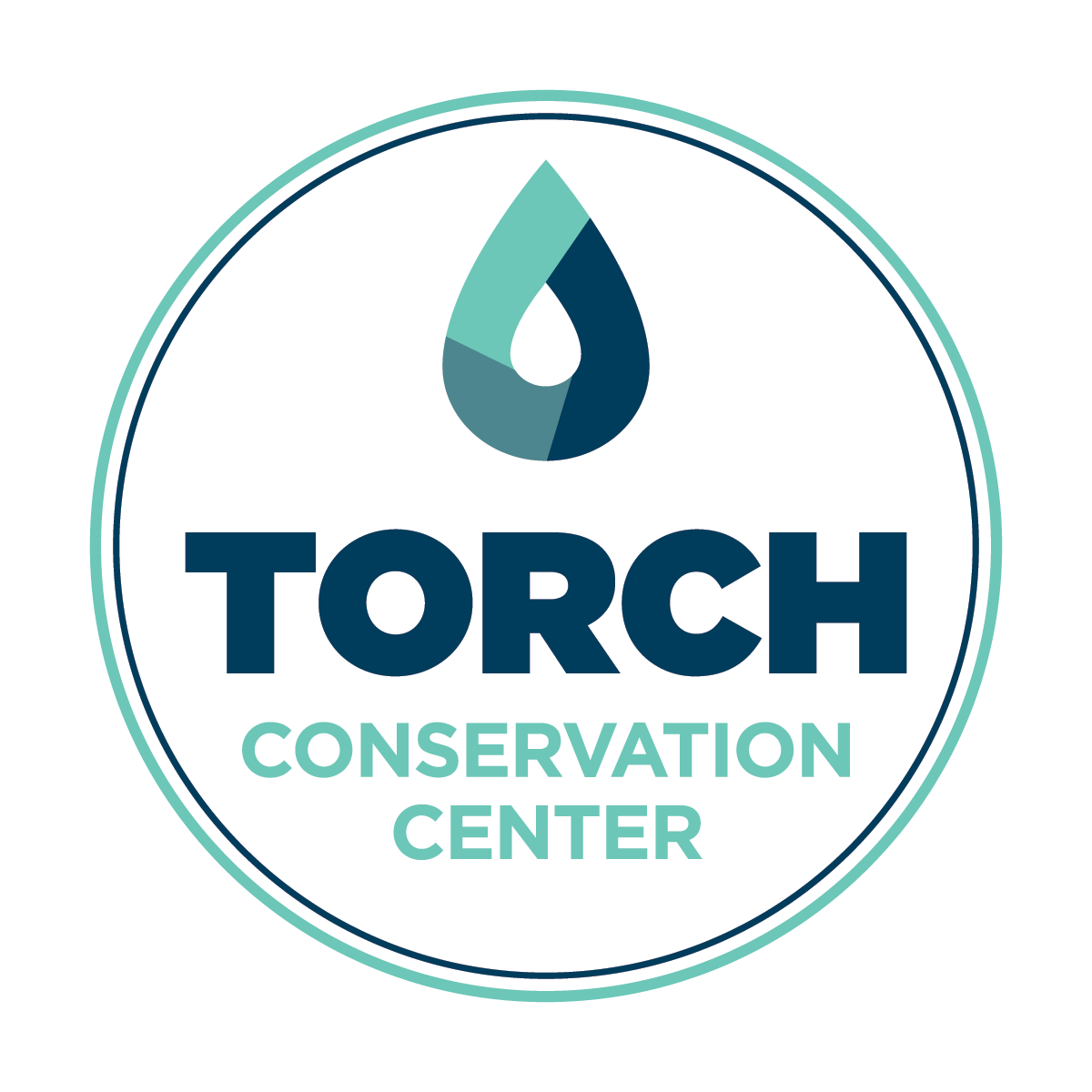 TRUE BLUE Lawns
TRUE BLUE Lawns
Build Healthy Soil
Why is it so difficult to grow plants and trees in the Torch Lake Watershed?
Most soils in the Torch Lake Watershed are sand or sandy loam.
- These sandy soils act like sieves not sponges.
These soils have large particles with big spaces between the particles. - They dry out quickly.
Instead of holding water, these soils filter water as it percolates into the groundwater that feeds Torch Lake and our drinking water. - Our topsoil layer is 1” or less.
Plants need a topsoil layer 4-6” or more. - Our soils are low in organic matter (2% or less).
Healthy soil needs more (5%+). - Sandy soils are low in nutrients but high in minerals.
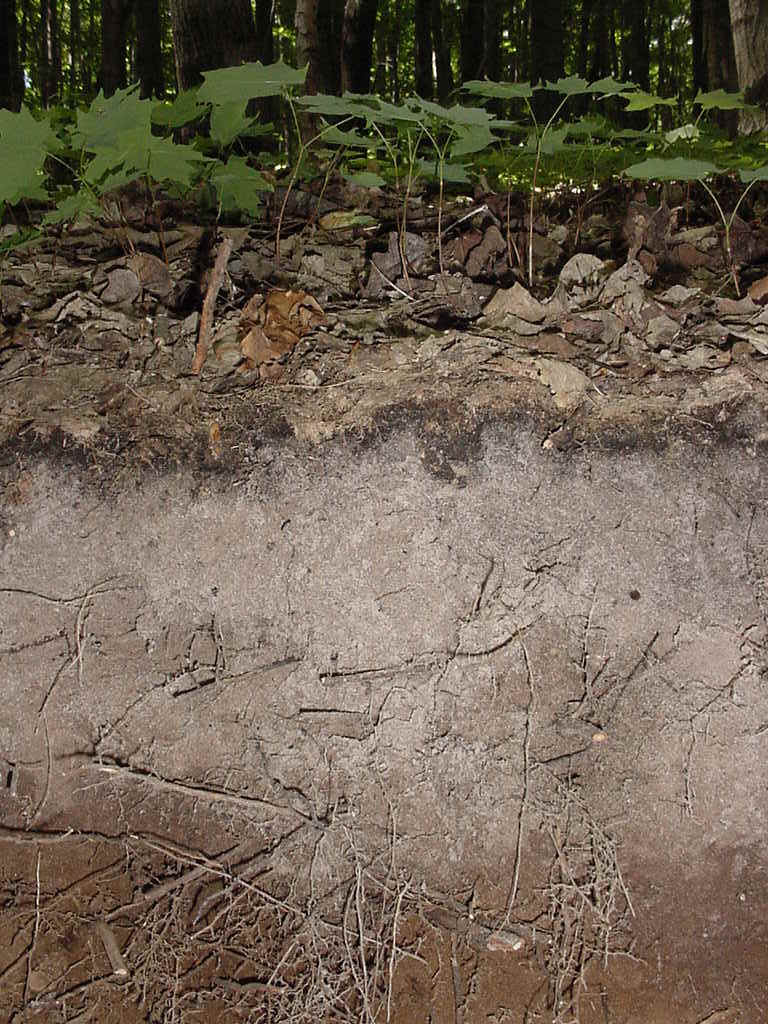
Sandy Loam Soil Profile Photo: geo.msue
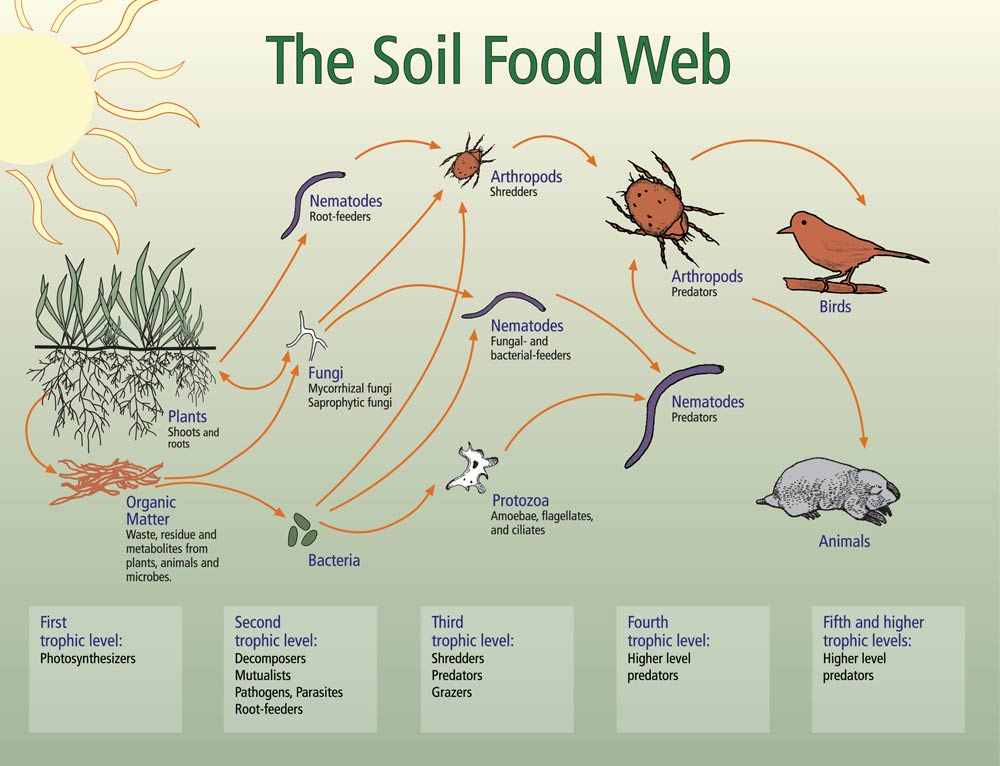
Healthy Soil Image: USDA
What is healthy soil?
- Healthy soil teams with life called microbes.
One teaspoon of healthy soil contains more microbes than there are people on Earth. - Microbes are microscopic fungi, bacteria and protozoa.
They constantly consume dead plants and animal material in the soil. - Healthy soil has lots of organic matter.
Organic matter makes soil porous and well-drained with a good capacity to hold water and nutrients.
What makes organic matter so nutritious?
“Living” Matter- 15% of total soil organic matter is alive!
- Microorganisms: bacteria, viruses, fungi, protozoa, algae
- Plant roots
- Insects & worms
“Dead” Matter
- Recently decomposed microorganisms, insects, worms, old plant roots, crop residues
- Added manure
“Very Old Dead” Matter (humus)
- Slowly release nutrients
- Surrounds toxins & prevents them from damaging plants
- Loosens the soil, so it crumbles easily.
These spaces in the soil allow oxygen in the air and water to move easily through the loose soil and reach the roots.
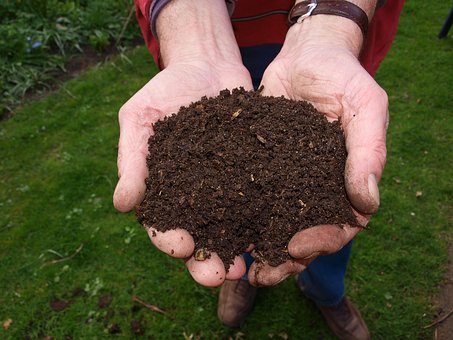
Humus is light and full of nutrients. Photo: UMaineExt
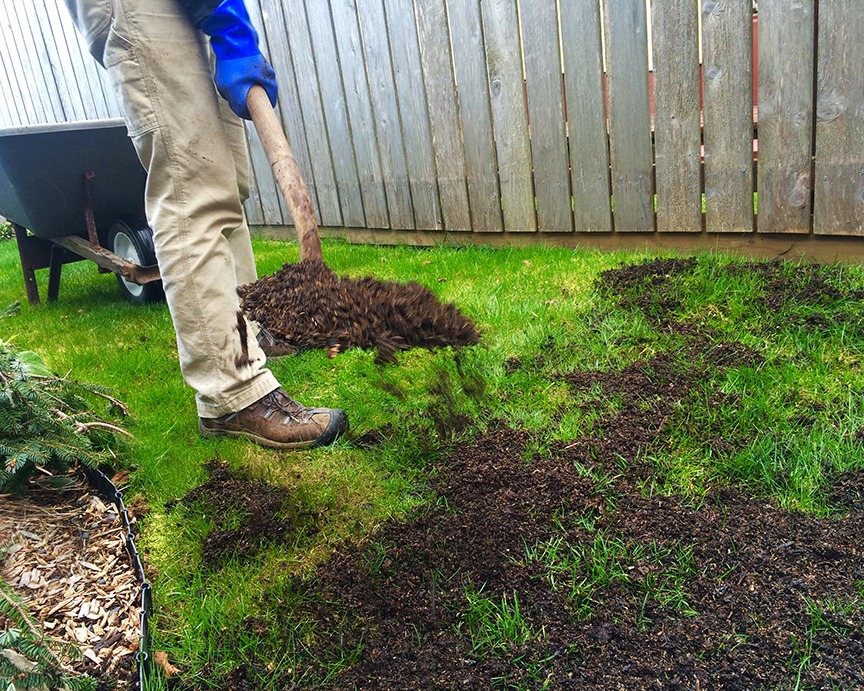
Photo: marionowenalaska.com
What are the benefits of building healthy soil to you and our water?
- Keeps excess nutrients out of Torch Lake.
- Reduces the algae growing on the bottom.
- Keeps Torch Lake BLUE!
- Saves money on lawn and yard maintenance.
- Prevents dangerously high levels of nitrogen in your drinking water.
How can I build healthy soil?
Building healthy soil is easy.
Step 1. Initially, add 2-3” of topsoil to your yard and work it into your soil.
Step 2. During the growing season, add chopped leaves, grass clippings and work into your soil.
They’ll break down and add nutrients like nitrogen and organic matter to the soil naturally.
Step 3. Annually, add compost or humus and work into your soil. They both contain microbes.
Compost contains natural nutrients from natural sources:
- food (vegetable scraps & coffee grounds)
- garden waste (leaves, stems, roots).
Compost contains organic matter, carbon and microbes!
Humus takes 1,000 years to form. Plants drop leaves, twigs and other materials to the ground, and it piles up. This material is called leaf litter. When animals die, their remains add to the litter. Over time, this litter decomposes and breaks down into most basic chemical elements.
Find more Caring for Water ideas in TRUE BLUE Lawns
Don't just wish that Torch Lake will stay blue.
Choose a water-friendly lifestyle - make a difference!
